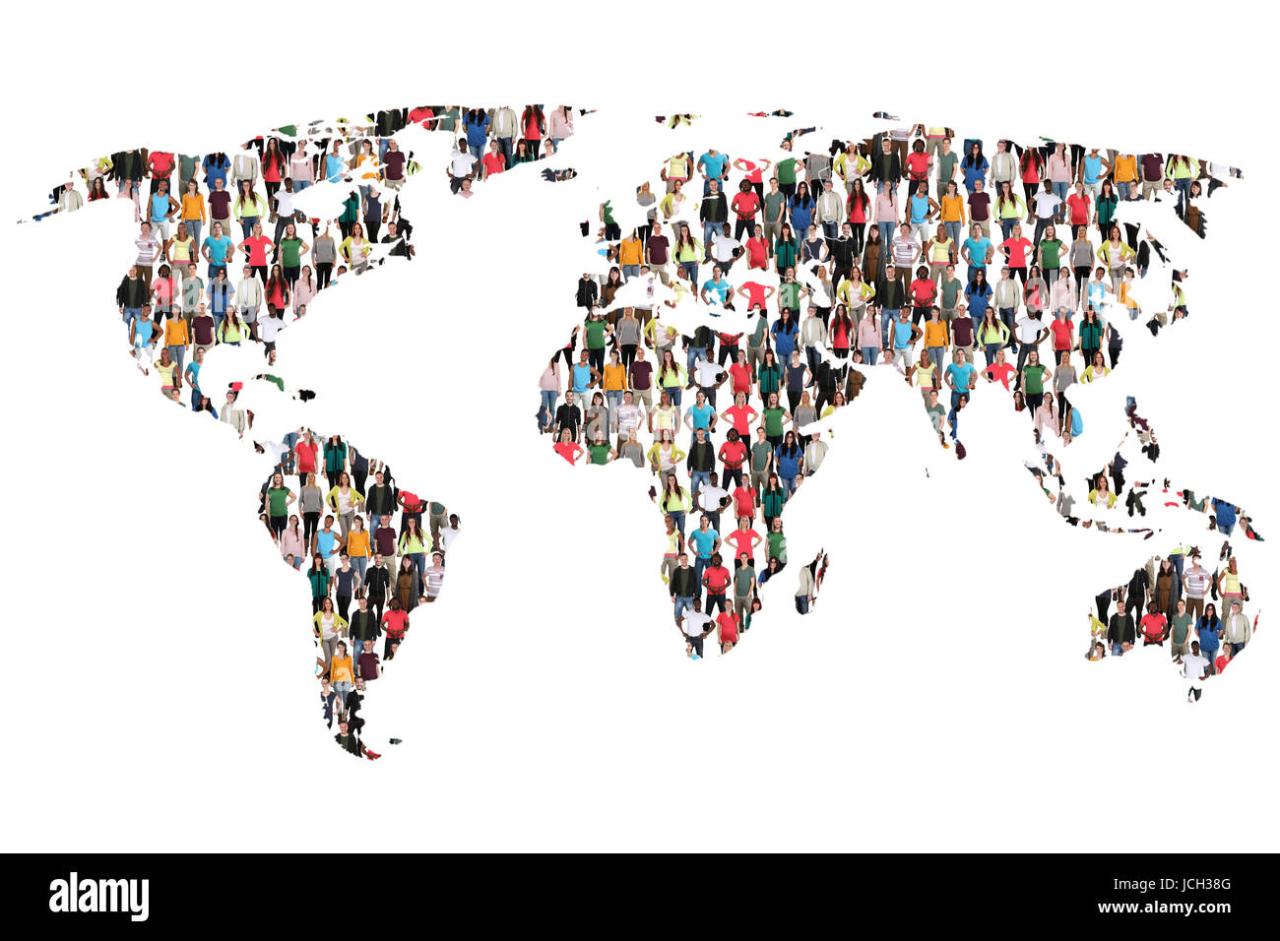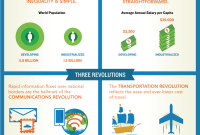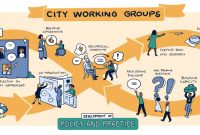In an increasingly interconnected world, immigration has become an integral aspect of societies worldwide. Cultural integration, the process by which immigrants adapt to and participate in their new communities while maintaining their cultural heritage, plays a crucial role in fostering harmonious and prosperous societies.
This discussion will explore the multifaceted nature of immigration and cultural integration, examining its benefits, challenges, and the importance of celebrating diversity. We will also delve into successful policies and initiatives, drawing lessons from case studies and identifying future directions for promoting successful integration in a globalized world.
Immigration and Cultural Integration
Cultural integration refers to the process by which immigrants adopt the values, beliefs, and practices of their new country while retaining aspects of their own culture. It is crucial for fostering social cohesion, reducing prejudice, and creating a more inclusive society.
Successful Policies and Initiatives
Several countries have implemented successful policies to promote cultural integration. These include:
- Language acquisition programs: Providing immigrants with language classes helps them communicate effectively and integrate into society.
- Intercultural exchange programs: Facilitating interactions between immigrants and native-born citizens promotes understanding and breaks down stereotypes.
- Multicultural festivals and events: Celebrating the diversity of cultures through events fosters inclusivity and appreciation.
Benefits of Cultural Integration
Cultural integration, the process of incorporating different cultures into a cohesive and harmonious society, offers numerous advantages for both individuals and communities.
Economic Benefits
Cultural integration stimulates economic growth through:
Increased innovation
Diverse perspectives and experiences foster creativity and problem-solving, leading to innovative solutions and improved productivity.
Expanded markets
Integration opens access to new markets, allowing businesses to reach diverse customer bases and expand their reach.
Skilled workforce
Cultural integration attracts and retains skilled workers from diverse backgrounds, enriching the talent pool and driving economic prosperity.
Social Benefits
Beyond economic benefits, cultural integration also enhances social cohesion and well-being:
Improved community relations
Integration promotes understanding and respect among different cultural groups, fostering a sense of belonging and reducing social tensions.
Reduced prejudice
By fostering interaction and collaboration, cultural integration breaks down stereotypes and prejudices, creating a more inclusive and tolerant society.
Cultural enrichment
Integration exposes individuals to diverse traditions, arts, and perspectives, enriching their lives and broadening their horizons.
Challenges of Cultural Integration

Cultural integration poses several challenges for immigrants as they strive to adapt to new environments. One significant barrier is language proficiency. Limited proficiency in the local language can hinder communication, social interactions, and access to essential services like healthcare and education.Furthermore,
cultural differences can lead to misunderstandings and social isolation. Immigrants may encounter unfamiliar customs, values, and social norms, which can make it difficult for them to feel a sense of belonging. These challenges can have a profound impact on their well-being, social participation, and economic opportunities.
Role of Government and Society
Addressing the challenges of cultural integration requires a collaborative effort from both government and society. Governments can play a crucial role by providing language training programs, cultural orientation services, and support networks for immigrants. They can also implement policies that promote diversity and inclusion in various sectors, such as education, employment, and healthcare.Society
can contribute by fostering an inclusive environment where immigrants feel welcomed and respected. This includes promoting cross-cultural dialogue, organizing community events that celebrate diversity, and challenging stereotypes and prejudices. By working together, governments and society can create a more supportive and welcoming environment for immigrants, enabling them to successfully integrate into their new communities.
Celebrating Diversity

Celebrating diversity within a community is crucial for fostering inclusivity, understanding, and a sense of belonging. To effectively celebrate diversity, a comprehensive plan should be designed, encompassing events, festivals, and educational programs.
Events and Festivals
Events and festivals provide platforms for different cultures to showcase their traditions, customs, and arts. These gatherings create opportunities for community members to interact, learn about each other’s cultures, and break down barriers.
Table of Cultural Events Promoting Integration and Belonging
| Event | Purpose | Benefits ||—|—|—|| Cultural Heritage Festival | Celebrates the diversity of cultures within the community | Promotes appreciation for different cultures, fosters a sense of pride, and strengthens community bonds || International Food Festival | Features cuisine from various countries | Introduces new flavors, promotes culinary exploration, and fosters a sense of global community || Multicultural Dance Performance | Showcases traditional and contemporary dances from different cultures | Promotes cultural exchange, appreciation for artistic diversity, and encourages participation || Interfaith Dialogue Forum | Brings together representatives from different religious groups | Fosters understanding, reduces prejudice, and promotes interfaith cooperation || Community Unity Day | Celebrates the diversity of the community and promotes inclusivity | Builds a sense of shared identity, encourages participation, and strengthens community cohesion |
Educational Programs
Educational programs play a vital role in fostering cultural understanding and integration. Schools, community centers, and cultural organizations can offer workshops, seminars, and classes that focus on:
- Cultural awareness and sensitivity training
- Language classes
- History and cultural studies
- Intercultural communication skills
- Diversity and inclusion practices
These programs provide opportunities for individuals to learn about different cultures, develop empathy, and challenge stereotypes. By promoting knowledge and understanding, educational programs create a foundation for a more inclusive and integrated community.
Case Studies
Examining successful examples of cultural integration policies can provide valuable insights and best practices. Let’s explore case studies of cities or countries that have effectively implemented these policies.
By analyzing their approaches, we can identify common strategies, challenges faced, and lessons learned to inform our own efforts towards fostering inclusive and harmonious communities.
Best Practices and Lessons Learned
- Engaging Local Communities: Involving community members in the planning and implementation of integration policies ensures their ownership and buy-in.
- Providing Language Support: Language barriers can hinder integration. Offering language classes and translation services empowers newcomers to participate fully in society.
- Promoting Intercultural Exchange: Creating opportunities for interaction between different cultural groups fosters understanding and empathy.
- Addressing Employment Barriers: Ensuring equal access to employment for immigrants and refugees is crucial for economic integration and social cohesion.
- Evaluating and Adapting Policies: Regularly assessing the effectiveness of integration policies and making adjustments based on feedback is essential for continuous improvement.
Future Directions
As the world becomes increasingly globalized, cultural integration will continue to play a vital role in shaping our societies. Emerging trends and challenges will require us to rethink our strategies for promoting successful integration in the future.One of the most significant challenges we face is the rise of populism and nationalism.
These ideologies often seek to divide people based on their cultural differences, making it more difficult to build cohesive and inclusive societies. Another challenge is the growing inequality between different cultural groups. This can lead to resentment and conflict, further hindering integration.Despite
these challenges, there are also a number of positive trends that can help us to promote successful integration in the future. One of these is the increasing recognition of the importance of diversity. More and more people are coming to understand that diversity is a strength, not a weakness.
Another positive trend is the growing use of technology to connect people from different cultures. This can help to break down barriers and foster understanding.To promote successful integration in the future, we need to develop new strategies that address the challenges we face.
These strategies should focus on building bridges between different cultural groups, promoting understanding and tolerance, and reducing inequality. We also need to continue to support the positive trends that are already underway, such as the recognition of the importance of diversity and the use of technology to connect people.
Emerging Trends
One emerging trend is the increasing mobility of people. This is due in part to the globalization of the economy and the rise of new technologies that make it easier to travel and communicate. As a result, more and more people are living in countries other than their own.
This can lead to increased cultural diversity and the need for new strategies for integration.Another emerging trend is the rise of social media. Social media platforms can be used to connect people from different cultures and to share information about different cultures.
This can help to break down barriers and foster understanding. However, social media can also be used to spread misinformation and hate speech, which can hinder integration.
Challenges
One of the biggest challenges to cultural integration is the rise of populism and nationalism. These ideologies often seek to divide people based on their cultural differences, making it more difficult to build cohesive and inclusive societies. Another challenge is the growing inequality between different cultural groups.
This can lead to resentment and conflict, further hindering integration.Another challenge is the lack of resources for integration. Many countries do not have the resources to provide adequate support for newcomers, such as language classes, job training, and housing. This can make it difficult for newcomers to integrate into their new societies.
Summary
Cultural integration is a complex and ongoing process that requires the active participation of both immigrants and receiving communities. By embracing diversity, fostering inclusion, and addressing the challenges faced by immigrants, we can create societies that are vibrant, resilient, and welcoming to all.
Q&A
What is the difference between assimilation and integration?
Assimilation refers to the process of immigrants adopting the dominant culture and abandoning their own, while integration involves a two-way process where both immigrants and the receiving community adapt and learn from each other.
What are some common challenges faced by immigrants in integrating into new cultures?
Language barriers, cultural differences, discrimination, and lack of access to resources are among the common challenges faced by immigrants.
What role can governments and societies play in promoting successful cultural integration?
Governments and societies can provide language classes, cultural orientation programs, and anti-discrimination policies to support immigrants and facilitate their integration.



